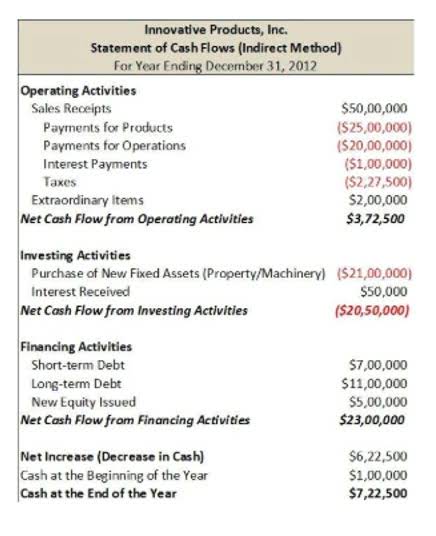Understanding Debt Ratio: Definition and Importance

The debt-to-EBITDA ratio measures a company’s ability to pay off its debt by comparing its total debt to its earnings before interest, taxes, depreciation, and amortization (EBITDA). Debt ratio analysis is used to review whether or not a company is solvent long-term. It indicates how much of a company’s financing assets are from debt and measures its ability to service that debt. A good debt ratio is usually below 0.50 or 50% This means the company’s assets are mainly funded by equity instead of debt.

Zacks Mobile App
The underlying principle generally assumes that some leverage is good, but that too much places an organization at risk. Once the debt amounts are totaled along with the assets, the debts would be divided by the assets as shown in the formula below. A variation on the debt formula is to add all liabilities to the numerator, including accounts payable and accrued expenses. For the debt ratio is used information pertaining to the registration status of 11 Financial, please contact the state securities regulators for those states in which 11 Financial maintains a registration filing. Debt ratio on its own doesn’t provide insights into a company’s operating income or its ability to service its debt.

Would you prefer to work with a financial professional remotely or in-person?

Debt ratios can vary widely depending on the industry of the company in question. The sum of all these obligations provides an encompassing view of the company’s total financial obligations. The industry with the best average Zacks Rank would be considered the top industry (1 out of 265), which would place it in the top 1% of Zacks Ranked Industries. The industry with the worst average Zacks Rank (265 out of 265) would place in the bottom 1%. An industry with a larger percentage of Zacks Rank #1’s and #2’s will have a better average Zacks Rank than one with a larger percentage of Zacks Rank #4’s and #5’s. As an investor, you want to buy stocks with the highest probability of success.
Premium Investing Services
A portion of these returns is typically plowed back into investment into new assets. Then the cycle of generating good earnings and cash flow returns on assets begins again. Companies with high debt ratios might be viewed as having higher financial risk, potentially impacting their credit ratings or borrowing costs. Lenders typically look for debt-to-credit ratios of 30% or less, which indicates that a borrower is less likely to be a financial risk.
Stakeholders, especially creditors, may view a high debt ratio as an increased risk, potentially impacting the company’s borrowing costs and terms. The debt ratio is the ratio of a company’s debts to its assets, arrived at by dividing the sum of all its liabilities by the sum of all its assets. Before applying for a personal loan, you can use a debt-to-credit ratio calculator to assess your creditworthiness and understand the type and size of a loan you may be eligible for. Explore Intrinio’s data solutions today and unlock the full potential of financial ratios in your investment strategy. Gearing ratios constitute a broad category of financial ratios, of which the D/E ratio is the best known. If both companies have $1.5 million in shareholder equity, then they both have a D/E ratio of 1.
Debt Ratio Formula
You are being directed to ZacksTrade, a division of LBMZ Securities and licensed broker-dealer. The web link between the two companies is not a solicitation or offer to invest in a particular security or type of security. ZacksTrade does not endorse or adopt any particular investment strategy, any analyst opinion/rating/report or any approach to evaluating individual securities. Improving your ratio is crucial in some situations, such as when you are applying for a mortgage or other large loan. It is also important to improve your ratio if you are planning to refinance and need a boost in your credit score.
- Moderately leveraged firms often strike the right balance between risk and returns.
- When using the D/E ratio, it is very important to consider the industry in which the company operates.
- Financial firms operate with very high leverage ratios, but their debt is a source of funding rather than a long-term obligation.
- The broader economic landscape can serve as a lens through which a company’s debt ratio is viewed.
- Microsoft Excel provides a balance sheet template that automatically calculates financial ratios such as the D/E ratio and the debt ratio.
- ZacksTrade does not endorse or adopt any particular investment strategy, any analyst opinion/rating/report or any approach to evaluating individual securities.
The debt ratio takes into account both short-term and long-term assets by applying both in the calculation of the total assets when compared with total debt owed by the company. The debt ratio is a financial ratio used in accounting to determine what portion of a business’s assets are financed through debt. Short-term debt also increases bookkeeping and payroll services a company’s leverage, of course, but because these liabilities must be paid in a year or less, they aren’t as risky.
Another shortcoming is that the debt ratio is misleading when comparing companies of different sizes. Large, well-established companies tend to have higher debt ratios as they borrow money at lower interest rates. While both companies could have reasonable leverage for their situation, the debt ratio makes the larger company unearned revenue appear riskier on the surface. Looking at historical trends and industry averages helps account for differences in company size and business models. These numbers can be found on a company’s balance sheet in its financial statements.

How does the debt ratio help in fundamental analysis?
The debt ratio is an important financial metric that is used by investors, creditors, and analysts to evaluate a company’s financial health. A high debt ratio can indicate that a company is taking on too much debt and may have difficulty meeting its debt obligations. On the other hand, a low debt ratio can indicate that a company has a strong financial position and is less risky for investors and creditors. The debt ratio is commonly used to measure a company’s financial health and, more importantly, its trend.

